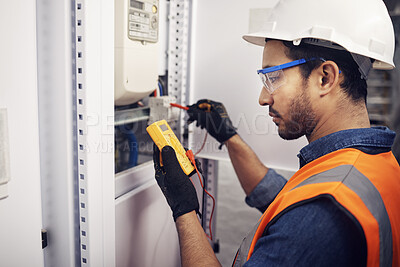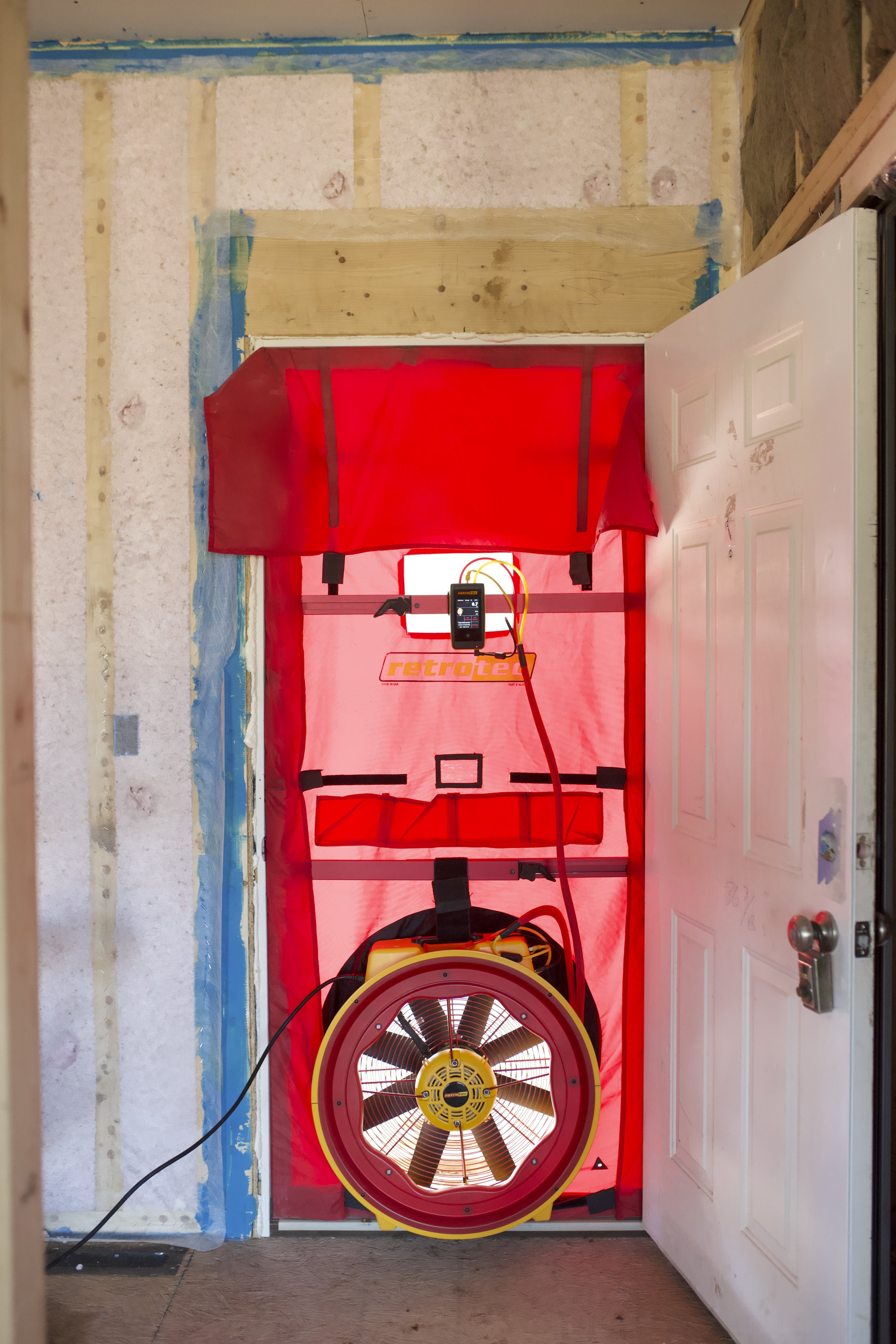Energy testing and thermographic imaging: A powerful duo for better home diagnostics
Energy testing and thermographic imaging: A powerful duo for better home diagnostics
Blog Article
How Power Testing Can Bring About Much More Sustainable Living Solutions
Energy screening is a vital tool for promoting lasting living. It uncovers ineffectiveness in energy usage within homes. Approaches such as energy audits and thermal imaging offer beneficial understandings. Home owners can determine locations needing improvement, from insulation to home appliances. Dealing with these ineffectiveness can lead to considerable power savings. Several stay uninformed of the full possibility of these techniques. What steps can people require to enhance their homes and add to a much more lasting future?
Recognizing Power Screening and Its Relevance
Typical Approaches of Power Testing
There are a number of typical techniques of energy screening that homeowners can utilize to evaluate their power performance (air tight solutions). One commonly made use of technique is the blower door test, which measures the air leakage in a home. By pressurizing the building, it determines breezy areas that might require sealing. Another method is thermal imaging, where infrared cams detect temperature variations in ceilings, wall surfaces, and windows, highlighting insulation issues.Energy audits are likewise popular, entailing a complete analysis of a home's energy usage, commonly performed by an expert. These audits might include assessing heating and cooling down systems, devices, and overall energy consumption patterns. Additionally, smart power meters can supply real-time data on energy use, aiding house owners comprehend their usage practices. Together, these approaches provide important understandings, enabling property owners to make educated choices concerning improving their energy effectiveness and promoting lasting living techniques
Identifying Energy Inefficiencies in your house
Determining power inefficiencies in a home is crucial for property owners aiming to lower power usage and lower utility costs. Common locations to evaluate consist of insulation, windows, and appliances. Poor insulation can bring about significant warmth loss in winter season and unwanted warm gain in summer, making heating & cooling systems work harder. Breezy windows add similarly, permitting conditioned air to leave and raising power demand.Additionally, out-of-date devices typically eat more power than their modern counterparts, additionally aggravating ineffectiveness. Property owners need to also think about the illumination system, as incandescent light bulbs use even more energy compared to LED options.Regular maintenance of cooling and heating systems is crucial, as neglect can bring about reduced efficiency. By systematically evaluating these facets of a home, home owners can pinpoint locations requiring renovation. Resolving these inefficiencies not only boosts comfort however likewise adds to a more lasting way of living by decreasing power waste.
The Duty of Energy Audits in Sustainability
Power audits play a vital function in advertising sustainability by offering house owners with a considerable analysis of their power usage. These evaluations identify locations where energy is squandered, allowing people to understand their usage patterns and make educated choices for enhancement. By disclosing inefficiencies in heating, air conditioning, insulation, and home appliances, energy audits act as a critical device for minimizing overall energy demand.Furthermore, they promote the execution of energy-saving procedures, such as upgrading insulation or installing energy-efficient lights, which can significantly lower energy expenses and decrease carbon impacts. The insights got from an energy audit empower homeowners to focus on sustainability in their living atmospheres. As more households take part in this process, the cumulative effect adds to more comprehensive ecological goals, cultivating a society of energy awareness and obligation. Ultimately, energy audits are fundamental to advancing lasting living options, profiting both specific home owners and the setting at large.
Ingenious Technologies for Energy Performance
As home owners significantly seek to enhance their power efficiency, ingenious innovations are arising to sustain these ventures. Smart home systems, outfitted with sensing units and automation, enable home owners to check and control energy usage in real-time. These systems can adjust home heating, illumination, and air conditioning based on tenancy, thus reducing waste.In addition, innovations in energy-efficient appliances have made substantial strides. Tools such as power STAR-rated refrigerators and washing machines take in much less power while providing excellent performance. The integration of renewable power resources, like solar panels and wind turbines, allows property owners to create their own power, reducing reliance on nonrenewable resources.Building products have actually additionally evolved, with options like shielded concrete forms and energy-efficient home windows adding to minimized power loss. With each other, these cutting-edge modern technologies not only boost power efficiency but also cultivate a more lasting living environment, empowering house owners to make impactful options in their power usage methods.
Long-Term Perks of Sustainable Living
While numerous may check out sustainable living as a trend, its long-term advantages expand much beyond simple lifestyle selections. Welcoming lasting practices brings about considerable reductions in carbon footprints, contributing to a much healthier world. By minimizing source usage and focusing on renewable resource, people and neighborhoods can experience lower utility expenses. This financial relief can boost economic stability with time, permitting reinvestment in various other vital areas.Furthermore, lasting living cultivates more powerful neighborhood ties as individuals collaborate on local efforts, advertising social communication. Health benefits likewise arise, as reduced air pollution and raised environment-friendly spaces boost air top quality and overall wellness. Additionally, future generations will certainly acquire a much more sustainable environment, guaranteeing the availability of all-natural sources and biodiversity. Eventually, the long-term advantages of sustainable living encompass environmental, economic, and social measurements, providing an engaging case for individuals to embrace and keep these techniques for the greater good.
Actions to Implement Energy-Saving Solutions
Executing energy-saving remedies starts with an extensive evaluation of energy usage patterns to determine locations for enhancement. When these patterns are understood, people can determine energy-efficient upgrades that straighten with their requirements. Constant monitoring and changes to energy usage warranty that these remedies stay reliable with time.
Assess Energy Intake Patterns

Examining energy consumption patterns is a necessary action toward determining reliable energy-saving options. By methodically tracking use throughout different times and companies, devices and individuals can pinpoint areas of excessive consumption. This analysis can expose peak use durations, making it possible for a better understanding of when energy needs are highest. Additionally, analyzing patterns permits for contrasts between comparable home appliances, highlighting those that operate less successfully. Data collection methods, such as wise meters and power audits, give beneficial understandings into general power usage. Identifying trends over time can assist in identifying seasonal variants and changes in consumption practices. This foundational knowledge is crucial for developing targeted methods that promote lasting living and decrease general power expenditure.
Identify Energy-saving Upgrades
To successfully implement energy-saving services, determining energy-efficient upgrades is important for both homeowners and businesses. This process starts with a thorough examination of existing systems, consisting of heating and cooling systems, insulation, and appliances. Upgrades may incorporate installing power STAR-rated home appliances, improving insulation, and utilizing energy-efficient home windows. Furthermore, applying smart thermostats can enhance heating and cooling routines, decreasing power consumption. Shifting to LED illumination is an additional effective procedure, as it takes in significantly less power than typical light bulbs. In addition, checking out renewable resource choices, such as photovoltaic panels, can provide long-term financial savings. Inevitably, focusing on these upgrades not just adds to decreased power prices yet also promotes a dedication to sustainability, profiting both the atmosphere and future generations.
Display and Adjust Usage
Surveillance and adjusting power usage is critical for making the most of the benefits of energy-saving services. Regularly examining energy intake patterns permits individuals and services to identify areas for enhancement. By utilizing smart meters and energy administration systems, customers can track real-time usage and identify any anomalies that may indicate inefficiencies.Adjusting actions, such as shutting off lights official statement and unplugging extra tools, additionally boosts power financial savings. Additionally, scheduling home appliances to run during off-peak hours can considerably minimize costs.Conducting routine power audits warranties see this website that applied services stay efficient gradually. By actively taking part in surveillance and changing methods, individuals can optimize their energy efficiency, contribute to sustainability initiatives, and inevitably lower their ecological impact.
Regularly Asked Concerns
Just how much Does a Power Audit Usually Expense?

Can Power Testing Help In Reducing Utility Bills?
Energy testing can considerably minimize energy expenses by recognizing inadequacies in a home's power usage. By attending to these concerns, house owners commonly experience lower usage and expenses, resulting in even more affordable power administration and boosted financial savings.
What Certifications Should an Energy Auditor Have?
An energy auditor must possess relevant certifications, such as RESNET or BPI, alongside experience in building scientific researches. energy testing. Strong analytical abilities and expertise of energy efficiency methods are vital for carrying out accurate assessments and offering efficient suggestions
Are There Federal Government Rewards for Energy Performance Upgrades?
Federal government motivations for energy efficiency upgrades usually exist, consisting of tax grants, discounts, and debts. These programs intend to encourage companies and property owners to buy energy-saving technologies, inevitably promoting environmental sustainability and reducing total power consumption.
How Usually Should I Conduct Power Testing in My Home?
Energy testing should preferably be conducted every year to determine inadequacies. Nevertheless, property owners might think about a lot more constant assessments after considerable renovations, modifications in energy expenses, or if uncommon drafts or temperature level variations are discovered within the home. Power testing allows the assessment of exactly how well a home makes use of power, determining locations where waste takes place. Recognizing power inadequacies in a home is vital for home owners intending to decrease energy consumption and reduced energy bills. Energy audits play a vital function in promoting sustainability by offering house owners with a considerable evaluation of their energy usage. By exposing inefficiencies in heating, air conditioning, insulation, and home appliances, power audits serve as an important tool for reducing general power demand.Furthermore, they assist in the execution of energy-saving procedures, such as updating insulation or installing energy-efficient lights, which can substantially reduce utility expenses and minimize carbon footprints. Power screening visit the site can significantly minimize utility costs by determining inefficiencies in a home's energy usage.
Report this page